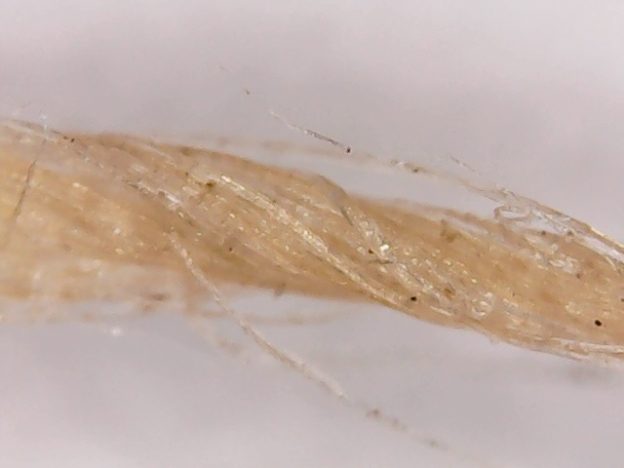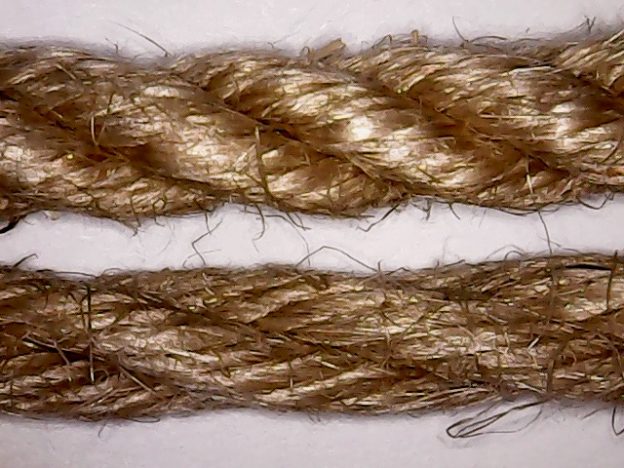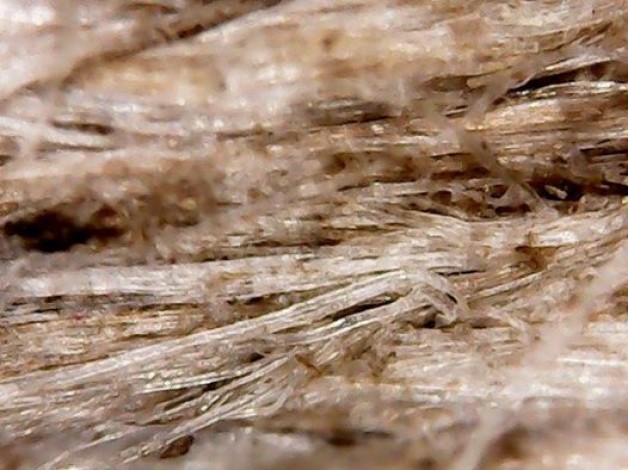You might be forgiven for thinking the header image is Shredded Wheat (an English breakfast cereal) but we are actually getting close-up with rope. This is some of the latest batch of my Amanawa Linen Hemp photographed through a digital microscope at x 1,000 magnification! OK, I admit for most purposes getting this up close isn’t going to be that useful. However, it also allows nice clear photos at yarn level, like this jute yarn below. You can see very easily that is very clean and consistent in diameter. This yarn, which comes from an interesting prototype, is exceeding fine as the rope contains 35 in each of the 3 plies in a 5mm rope:

Of course, you can always take a closer look:

I plan to experiment further to use it to give a more accurate assessment of the quality of the yarn used by my various suppliers. That said, I am always very impressed by the superb standard of the materials used by my main supplier. This will not only help me identify the cleanest fibres to give feedback to my suppliers but will also allow you to see what you are getting from your money at each price level.
However, where I think it will be most useful is in providing very detailed photos on ESINEM-Rope to allow you to see exactly what each type of rope is like. For example, here you can see the difference between Tossa and Osaka. The construction, colour and lay (twist) are quite distinctive:

Tossa 5mm, 3-ply, 10 x double yarns per ply (top), Osaka 5mm, 3-ply 8 x single yarns per ply (bottom)
Another interesting feature of the software that came with the microscope is precision measurement down to several decimal points of 1mm. One tool allows measurement between two parallel lines of any length. This could prove a very good way to measure rope. If you look at the photo above, you can see one problem with measuring. If you take a single point, the measurement varies depending upon where you take it, on the peaks or in the valleys of the twist. Thus, you need to measure the widest points, i.e. the peaks. Clearly, if the rope is straightened by applying gentle tension, the distance between two parallel lines, just touching as many peaks as possible, will be very accurate.
Of course, such measurements would only hold true for a single uninterrupted production run with no adjustments to machines or materials. Despite strict instructions, it seems sizes are always nominal rather than precise and often vary between batches. I suspect the only way to minimise this is by buying yarn by the container load (20 tonnes). The downside is that is it turns out to be a bad batch, we really have a problem.
It seems pretty typical that suppliers nominal sizes are less than the actual diameter. I assume this is because most mainstream customers wouldn’t complain if they received a stronger rope and would think of it as getting more for their money. It might also be a butt-covering exercise so they never fall below spec. Due to this, most of us are used to nominal sizes. I am often surprised by how thin a ‘true 5mm’ seems as most are 10-15% thicker. I think my customers might find the same, so I will also stick with my practice of having a familiar reference item in the photo like the pencil I include now next to the rope in product images..

